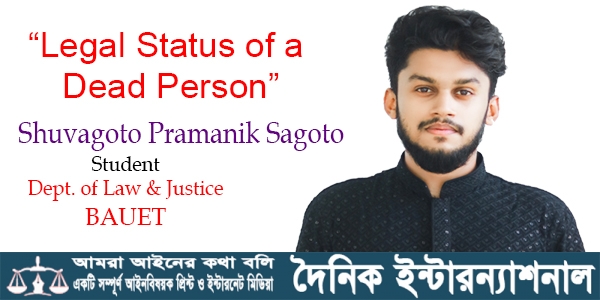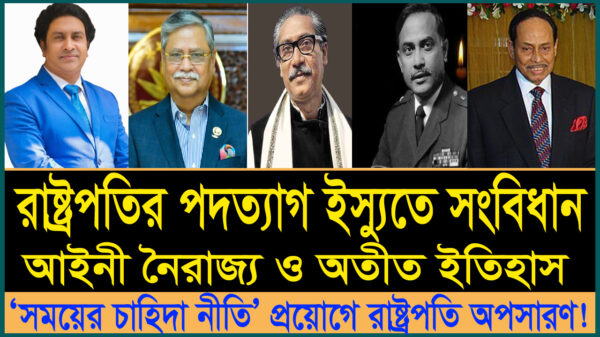শুক্রবার, ১৫ নভেম্বর ২০২৪, ০৫:১৫ পূর্বাহ্ন
The Humanist Bard Fokir lalon Shaw

P.M. SERAJUL ISLAM
Fokir Lalon Shah was spiritual leader, Baul singer, mystical poet, saint, reformer and composer of baul songs. People do not know his real birth date, place, religion, even parent’s name. The research finding Lalon Fakir was born in 1774. Lalon died at the age of 116 years. The details of Lalon’s early life are debatable and impossible to verify. Lalon also recorded very little information about himself, as he considered his spiritual activities to be a private matter. According to tradition, he was born into a kayastha family in the village of Bharora in Kushtia. As a young boy, Lalon caught smallpox and was abandoned in the Kaliganga River, a branch of Ganga, which flowed through Kushtia, in a critical condition. Siraj Saint (Malam Shah), a Muslim fakir, and his wife Matijan picked up the child and nursed him back to health. Lalon was later inducted as a Baul fakir. He set up an akhra at Chheuriya in Kushtia, where he lived with his wife and a few disciples. Matijan was the first devotee of Lalon.
Lalon was devoted to love, freedom and peace that express in his songs. He taught the way of everlasting liberation. He strongly emphasized to decide the internal conflict and dominancy of false desires. Lalon Shah left no written copies of his songs, which were transmitted orally and only later transcribed by his followers. kangal harinath majumdar (1833-1896) was his direct disciple. Rabindranath tagore was also inspired by his songs and published some of them in the monthly prabasi of Kolkata. Lalon died at Chheuriya, at the age of 116 on 17 October 1890 (so called).
Thousands of bauls and their followers together with the members of huge public came to the shrine (Akkra bari) to pay homage to their great spiritual leader and stayed there five continuous days and nights singing, praying which the bauls term as sadhu sheba or service to saints. But the image it gave was far from the traditional baul mela or festival although the presence of the bauls was not insignificant.
The festival spread over four acres of land and it covered areas outside shrine premises and over the dead Kaliganga River beside the historic Mohini Mills in the shrine.
The bauls are accommodated in the ground floor of a big two-storied building to avoid rain thundershower or the sun. A limited number of bauls are around the shrine under the open sky. In addition, a part of Lalon mela was organised in the open space on the western side of the Lalon shrine.The Awami league government constructed a huge cultural complex at Lalon Academy for preservation of baul and Lalon culture.
It has included a four-storied building which is being utilized as library, archives, museum and office room, the other two-storied building is used as resort for bauls and auditorium. The government spent Tk 3 crore and 54 lakh for the complex.
Lalon Shah, the great baul spiritual leader spoke of humanism and unity of all human beings setting aside cast and class distinctions. It is learnt that Rabindranath Tagore was drawn towards him such unique ideals. His songs offering known in Bangla as Gitanjali bears plenty evidence of such influence.
Assistant Khadam of Shirne, Karamot Ali says, “Malam sha regularly read the holy Quaran. During namaj when he mistook, Lalon sha made sound. As asking the meaning of sound, one night Lalon said to bring the Quaran, and shown the correct way of reading with excellent explanation. Malam sha was astonished to see formally illiterate Lalon’s wisdom. He was moved and became irregular to mosque. Most of time spent with Lalon.” Malam sha did not have any child. One day neighbor said, Malam sha now spent time only with others son. After hearing the rumor Lalan said, ‘I will not live hear anymore’. Mother Motizan encountered Lalon by the love affection, ‘we don’t have child. You came as son, but now going!… ’. After that Lalon changed his decision with the condition to live separated house. Malam made a round shaped new house with straw where Lalon lived and did meditation. Once Lalon tripped to west of the district and returned back with Beshaka Fakir. In the gathering, followers asked – who is she? Lalon said, consider she is your ‘Guru Ma’. After that Beshaka Fakir lived here for forever. Brother, parents, relative, nobody came to looked her. In the mean time, Lalon sha’s father Malam sha died. Lalon shah said, when I would die, please take me to beside my mother (Motizan). They are now together. A land where we are now was belonging to Malam sha. Before died he registered this16 units land to Lalon sha. Before, during festival huge people could not be managed. Government has extended the space in the bank of river. Now here annually two ceremonies have been held. Once at dul purnima (full moon night). Another is at fixed pohala Kartik but fixed. In the light of full moon dul purnima’s event is marvelous.
Lalon composed numerous songs and poems, which describe his philosophy. Among his most popular songs are:
- 1. khachar bhitor auchin pakhi
- jat gelo jat gelo bole
- dekhna mon jhokmariay duniyadari
- paare loye jao amay
- milonhobe koto dine
- aar amare marishne maa
- tin pagoler holo mela etc.
Hindu and Muslim both communities wanted to communalize him. Hindus said he was a Kayastha and adopted by a Muslim Moulobi. However, Muslims said he was a Muslim by birth. Philosophically Lalon was none, as he always strove to go beyond all politics of identities.
Lalon composed about two thousands songs, which still provide spiritual inspiration and awareness. By songs he guided peoples to be “maner manush” (perfect man), “shohoj manush” (simple man). He was against to all forms of oppression, chain of command, and discrimination and caste system. He celebrates the freedom of mind and body. Lalon represents the “Baul”.
The “Baul” is a radical and worldly community. They are formerly illiterate and traveling singers but have extraordinary wisdom. Baul deny all worldly affairs in desperate search for a mystical joy of the soul with song by using Ektara (a one string musical instrument) and a dugdugi (a hand drum).
Fakir Babu sha, a devoted Baul singer says, ‘since last 30 years I am singing. I love Lalon’s songs very much. I found God’s word and human spirit in song-scripts. I have invested my life to this way.
The great Lalon was not famous in lifetime. But, his baul philosophy was introduced by Rabindranath and modern scholars. He was the greatest mystic-singer of the subcontinent. Lalon believed, the ‘body’ is the universe and the universe is the body. He was revolutionary, challenged to modern life style, religions and practices with simple word of songs.
Rabindranath Tagore’s own compositions were powerfully influenced by Baul philosophy. His music also bears the stamp of many Baul tunes. Other Bengali poets, such as Kazi Nazrul Islam, have also been influenced by Baul music and its message of non-sectarian devotion through love.
However, Lalon did not search contact with the middle and upper class. He did not even want to come near Rabindranath Tagore, because Tagore came from a Zamindar family. When Tagore invited him, he did not go; both lived around the same time in Bengal. Another famous man of that time was Ramakrishna. But Lalon could never become like Ramkrishna, charming the elites of Kolkata. All his life he lived at the bounds of Kushtia.
Lalon was against all forms of socio-economic chain of command, caste, class, and gender and any forms of politics of identity based on race, nationality, etc. He did not believe in divisions according to jat (caste), path (hierarchies by which who can accept food and water from whom), class, patriarchy, religion and nation.
In Kushtia at the Lalon shrine every year held “Lalon Festival” the biggest gathering of Bauls and Bauls’ performance. At present in Bangladesh modern signers also following the folk approach and word of Lalon songs. All Bangladeshi appreciate very much Lalon song, particularly for its deep spiritual meanings and inspiration.
The writer is Ph.D researcher and lawyer in Bangladesh Supreme Court. He can be reached at: seraj.pramanik@gmail.com, 01716-856728




























